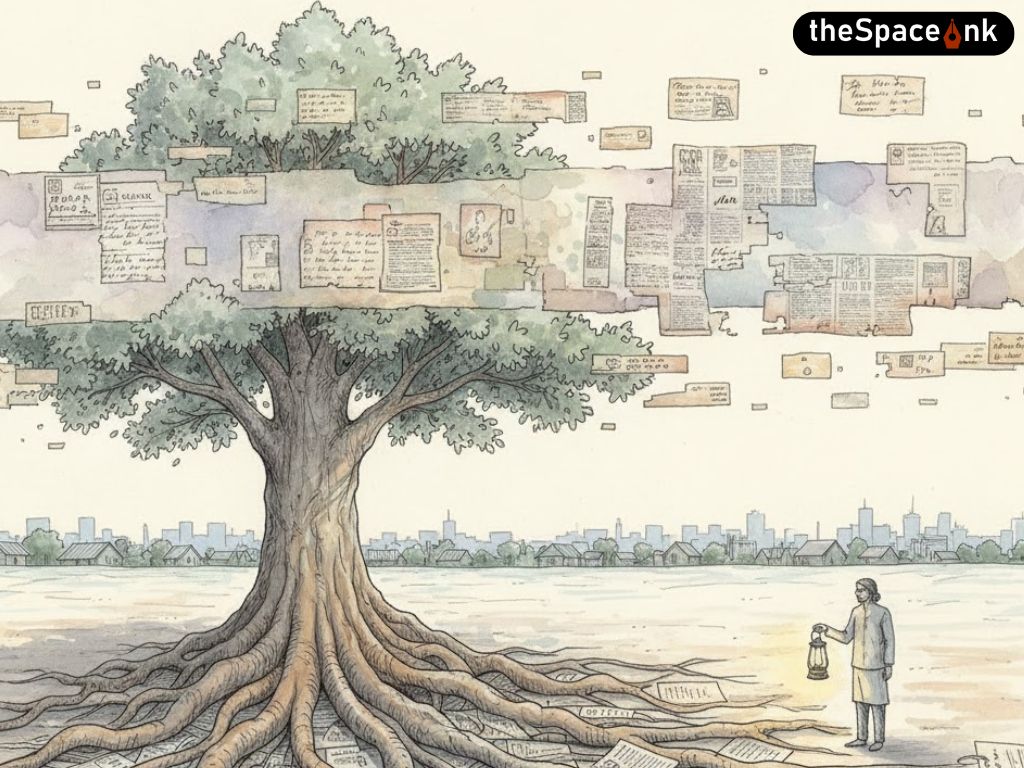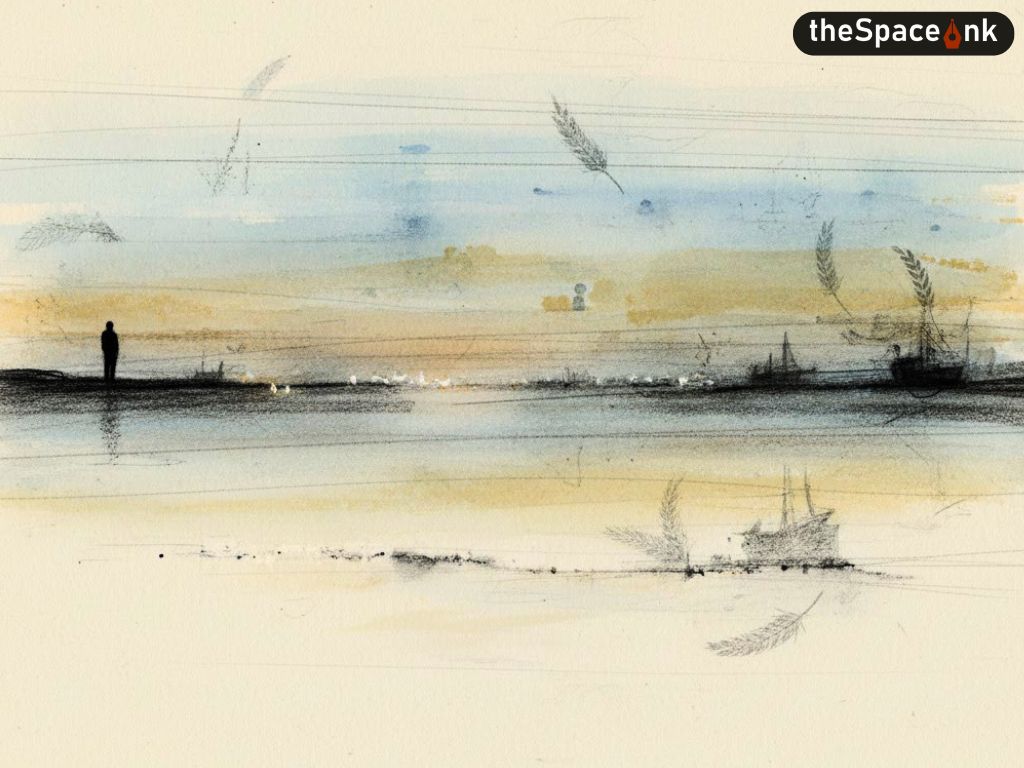I am still recovering from the trance that Anita Desai’s latest novel Rosarita transported me to. It’s almost like coming out of the theatre after having watched a film that stays with you long, long after.
It’s an exquisite piece of work. A slim volume in which a little corner of Mexico, a tip of very much of what South America is all about, comes to life through a dream like quality of an alienated past life. It is created on the decaying shifting patterns of an opulent colonial rule that was also marked by a violent revolution, which Desai likens to the Indian Partition, because her main character is an Indian woman who is gradually led to find out the real past of her mother.
Literature unites in loss and grief resulting in a yearning for love and joy. For in searching for our roots we come to finally rest.
Desai born of an East Bengali father and a German mother carries a sense of displacement within herself and she seeks to connect it with a sense of déjà vu in her stories of grief, loss and longing. Emerita John E. Burchard Professor of Humanities at the Massachusettes Institute of Technology, Desai lives in the Unites States when not visiting the country of her birth.
The narrator, addressed in the second person, is called Bonita by the mysterious Mexican woman. We do not know her real name but it could be Vanita. As an Indian student she goes to study Spanish in San Miguel and encounters a strange character who says she knew her mother, who came to study art in that country. Something her always sad and unhappy mother never ever talked about.

Written beautifully and with economy of words (I found similarities with Jhumpa Lahiri’s style in Whereabouts), there is a certain feel of magic realism conveyed through the background description of noise, dirt, the vivid pink blue and yellow houses and towards the end, the bluest sea. It all tugs at your heartstrings into believing things which may or may not be real; yet it makes sense till you can go that further and no more. “You seek and seek. But what do you seek?”
This essay is not just about Desai’s latest offering, but an assessment of her works. She is someone whom Salman Rushdie calls, “a magnificent writer.” It would be grossly unfair to say that I have read all her books but since this is no thesis, I can touch upon the salient points of some of her works and share the joys of reading some of these when growing up. In today’s times when India is producing more writers than ever, which is not a bad thing at all, let us sit for a little while and enjoy the journey of this senior writer, now 87 years old, through some of her well-known books.
Desai’s prose has always been lucid. When I first read Cry the Peacock, I could almost visualize the home with the lawn in Lucknow routinely watered every evening, the smell of wet earth mingling with the fragrances of the summer evening flowers.
The upper class life with its bungalows, the flower beds, and open spaces contrasted with the claustrophobic interiors, no matter how well-appointed these were. The female protagonists are never happy is a recurring theme in her novels. In fact, Desai has admitted in the interview given to The Guardian prior to the release of her latest book that she took the decision to leave India for a teaching assignment abroad so that could write more. “In England I was not anyone’s wife or mother, I was a writer. That was an amazing experience for me,” she said.
So while it is true that single or divorced women always have it hard in society, married woman writers are in far more difficult situations. It is not that the family makes it particular difficult but society has its own censuring apparatus for them.
In Cry the Peacock the unhappy wife is mentally obsessed with a terrible astrological prediction, which has a surprise ending. It reminded me of Don’t Look Now, the short story by Daphne Du Maurier where the mind becomes more acute in unhappy situations.
Not all Desai’s characters, however, are female. In Custody shortlisted for the Booker Prize in 1984 is about a Hindi journalist who is passionate about the Urdu language. He goes a long way to interview one of the last Urdu poets in India, but the result is not so nice. It was filmed by Merchant Ivory Productions and starred Sashi Kapoor, Shabana Azmi and Om Puri.

Earlier, in 1980, her Clear Light of Day also touches upon Partition. Set in old Delhi, it is said to be autobiographical and captures the tensions of post partition India as experienced by the different members of a family. Finally, the forgiveness that is so paramount in our lives, especially within a family, makes it an uplifting story. There are other novels such as Fasting, Feasting in 1999 that again explored two different cultures and the sensibilities therein leading to alienation and isolation. This too like Clear Light of Day was shortlisted for Booker but lost out to none other than J.M Coetze in the final selection.
In Baumgartner’s Bombay we are on a different terrain. It tells the story of a German Jew Hugo Baumgartner who flees to Bombay to escape the holocaust and spans a bigger geographical canvas thereby cultural covering Berlin, Venice, Bombay and Calcutta.
Also Read : Partition and the Vernacular
Desai returns to Mexico a second time with Rosarita and having read her earlier novel The Zig Zag Way in 2004, there are some overlapping of themes of looking for the past as a young American scholar with Cornish-Mexican parentage searches for his past. There are similar descriptions of cafes, streets and the country which Desai found very much at home in, coming from a third world country herself.
The book was not received too kindly but somehow I liked it but Rosarita meets all expectations of a good read and it is not just because she draws a brief parallel with Indian Partition, with images in paintings of violent trains carrying revolutionaries into Mexico as Bonita wonders if it relates to her mother’s ancestral history, “carefully guarded’.

“Were those trains she saw on the screen with their unspeakable cargoes, the ones that could have carried the Muslims of India to Pakistan and the Hindus of Pakistan to India, also the ones that carried her family across some savage new border from which few arrived alive?” The memories of which had emboldened Bonita’s mother to embark upon a journey to Mexico?
So even if some of us in the eastern part of India may crib we do not have literature on the Partition, suffice to say Rosarita has touched upon it briefly in a tale of displacement and alienation. What we need to do is collate the bits and pieces of this literature and bring it into clear focus to express solidarity with not just a section of the Indian people but put it against a broader, deeper perspective for whatever, whoever, and wherever – be it East Bengal, Palestine, Bangladesh, India, Ukraine. Literature unites in loss and grief resulting in a yearning for love and joy. For in searching for our roots we come to finally rest.
A dozen novels old, collections of short stories and children’s novels, one of which – The Village By The Sea – about the hardships faced by a small village community – won the annual Guardian Children’s Fiction Prize.
Anita Desai is truly India’s literary treasure. Salut.
Picture Credit – Flickr
A masters' in Comparative Literature from Jadavpur University, Manjira Majumdar has dabbled in journalism, teaching and gender activism. She shares her love for cinema, books, art and four-legged creatures with her family consisting of a husband and two daughters.








